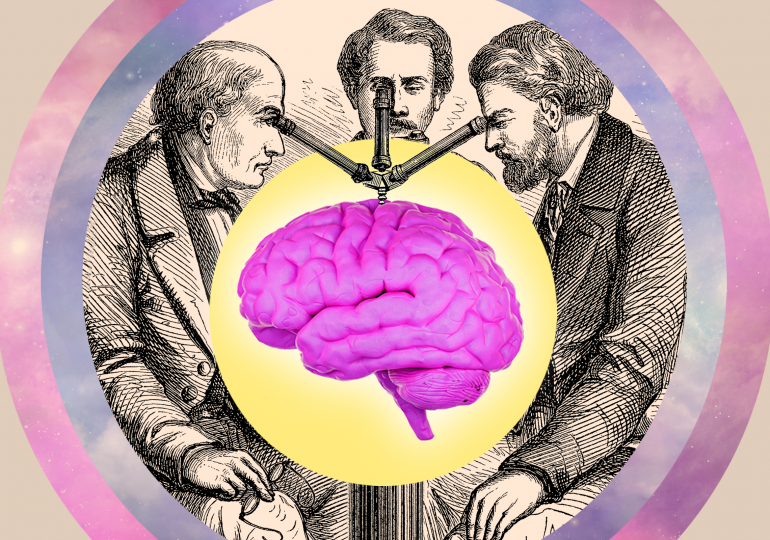For years, I allowed my environment to dictate the terms of my life, and I didn’t believe I could produce any meaningful change. This is so often the case when we experience trauma: the pain and shock of the experience take on an exaggerated authority in our minds that is difficult to challenge and frightening to confront. This pain is powerful enough to alter not only our own genes, but, as researchers in the field of epigenetics have discovered, the genes of subsequent generations.
[time-brightcove not-tgx=”true”]
Our minds and bodies organize around preparations to prevent a similar trauma from happening in the future, and in the process, our consciousness becomes caught in reacting to a frightening and unreliable external world, rather than envisioning the changes we can make. In the process, we give away the energy, attention, and focus we ourselves possess to make a real difference in our own lives; we are distracted away from our own power. And without knowing it, we trade our innate self-agency for magical thinking.
It’s a raw deal. And there is oftentimes no one to blame. The good news is that we now have insights into how powerful our mind is and most importantly through neuroscience how we can create the life we want. Fundamentally, we are claiming our self-agency and recognizing the power of neuroplasticity. In lay terms, we are manifesting.
The world can indeed be starkly unfair, and this unfairness can shatter a person’s dreams. And as unfair as I once perceived the world to be, I know today that countless other human beings in this world are treated with greater injustice, on both the individual and systemic levels. The societies they live in have created structural roadblocks to their ability to manifest, whether due to their race, social class, religion, sexual orientation, gender expression, or other arbitrary criteria. Manifesting is not a cure or a fix for all suffering. Like all human activity, it is often limited by countless factors beyond our control and reality, regardless of our intention.
Thus, I see manifesting as, at its heart, a practice of well-being, engagement with the world and living a good life. By practicing it, we cultivate “dispositional optimism,” defined as a generalized tendency to expect good outcomes across important life domains. Research has shown a staggering number of health benefits associated with dispositional optimism, from improvements in cardiovascular health, to how quickly wounds heal, to slower disease progression.
Where some may believe that the only measure of a successful manifestation is the material results it delivers, I consider this view to be misguided. The true gift of visualizing our intention again and again is to go through life with a buoyant sense that things will work out for us which liberates us to be both responsive and resilient no matter what our external circumstances bring.
For years, manifesting has long been confined to the same New Age territory as astrology, visions of angels, and reincarnation, full of pseudoscience and platitudes. But, in fact, the practice of manifestation dates back thousands of years. Much of what we associate today with manifesting derives from the Vedic scriptures of the Hindu tradition. In the Mundaka Upanishad, for example, it states, “Whatever world a man of pure understanding envisages in his mind and whatever desires he cherishes, that world he conquers and those desires he obtains” (3.1.10). The Buddha similarly commented on the powerful ability of thoughts to shape our experience of the world when he said, “Whatever a monk keeps pursuing with his thinking and pondering, that becomes the inclination of his awareness.”
Until recently, it was not possible to scientifically study the concrete processes by which the brain turns intention into reality. But significant developments in brain imaging have revolutionized our ability to watch the brain transform on a cellular, genetic, and even molecular level. We can now speak about manifestation in terms of cognitive neuroscience and the function of large-scale brain networks. This has allowed us to demonstrate that manifesting is neither a get-rich-quick scheme nor a misguided wish-fulfillment system, but part of the brain’s extraordinary ability to change, heal, and remake itself known as “neuroplasticity.”
Neuroplasticity is the general umbrella term for the brain’s ability to modify, change, and adapt both structure and function throughout life and in response to experience. This superpower, molded by experience, repetition, and intention, enables the brain to form new circuits, and to prune away old ones which no longer serve us. By redirecting our attention, we can literally change our brains, creating more gray matter in the very areas that help us learn, perform, and make our dreams come true. As the brain adapts, it makes alterations which can produce dramatic and positive effects on everything from Parkinson’s disease, to chronic pain, to ADHD. And the same neuroplasticity is the engine by which we change our minds and brains through the power of our intention to manifest the reality we envision through practice.
Read More: What Psychedelics Can Teach Us About Play
Manifesting is essentially the process of intentionally embedding the thoughts and images of the life we desire into our subconscious allowing various cognitive brain networks to be activated and work in sync. We are all manifesting the intentions stored within our minds in some form already in an untrained and uninformed way and the results are often haphazard, vague, and unfocused at best. To manifest consciously, we must reclaim our inner power to direct our attention. In the process, we must also learn how to harness that power by understanding how it involves us as a species, the physiological mechanisms that allow us to do so as well as the obstacles and false beliefs that limit our power. When we consciously direct our attention towards our desired goals, the images we evoke become important to the brain. The way the images get installed is through a process called “value tagging,” the brain’s way of deciding what is significant enough to be imprinted at the deepest levels of the subconscious.
When we practice visualization, we conjure powerful positive emotions, and these cue the “selective attention” system like a filing clerk to tag the images we desire as highly valuable and associate them with our reward system. Visualization works because, amazingly, the brain does not distinguish between an actual physical experience and one that is intensely imagined.
Once the images are installed in our subconscious, our brain works like a bloodhound to seek opportunities to bring them about in reality, putting the full force of our conscious and subconscious minds behind the search. As the opportunities arise, we notice them and respond, taking the necessary action to further our goal. We repeat this process many, many times and then, we let go of the attachment to the outcome and let things take their natural course.
Adapted with permission from MIND MAGIC by James R. Doty, MD, published by Avery, an imprint of Penguin Publishing Group, a division of Penguin Random House, LLC. Copyright © 2024 by James R. Doty, MD.
Leave a comment








